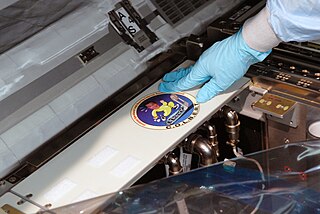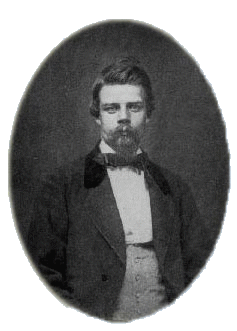Emboss, embosser, or embossing may refer to:
Emboss, embosser, or embossing may refer to:
The term usually refers to several techniques for creating a raised pattern on a material:

Braille is a tactile writing system used by people who are visually impaired. It can be read either on embossed paper or by using refreshable braille displays that connect to computers and smartphone devices. Braille can be written using a slate and stylus, a braille writer, an electronic braille notetaker or with the use of a computer connected to a braille embosser.

A braille embosser is an impact printer that renders text as tactile braille cells. Using braille translation software, a document or digital text can be embossed with relative ease. This makes braille production efficient and cost-effective. Braille translation software may be free and open-sourced or paid. Braille embossers can emboss single-sided or double-sided and can produce 6- or 8-dot braille.

Printmaking is the process of creating artworks by printing, normally on paper, but also on fabric, wood, metal, and other surfaces. "Traditional printmaking" normally covers only the process of creating prints using a hand processed technique, rather than a photographic reproduction of a visual artwork which would be printed using an electronic machine ; however, there is some cross-over between traditional and digital printmaking, including risograph.

A rubber stamp is an image or pattern that has been carved, molded, laser engraved, or vulcanized onto a sheet of rubber. Rubber stamping, also called stamping, is a craft in which some type of ink made of dye or pigment is applied to a rubber stamp, and used to make decorative images on some media, such as paper or fabric.

A stylus is a writing utensil or a small tool for some other form of marking or shaping, for example, in pottery. It can also be a computer accessory that is used to assist in navigating or providing more precision when using touchscreens. It usually refers to a narrow elongated staff, similar to a modern ballpoint pen. Many styluses are heavily curved to be held more easily. Another widely used writing tool is the stylus used by blind users in conjunction with the slate for punching out the dots in Braille.

A decal or transfer is a plastic, cloth, paper, or ceramic substrate that has printed on it a pattern or image that can be moved to another surface upon contact, usually with the aid of heat or water.

Embossing and debossing are the processes of creating either raised or recessed relief images and designs in paper and other materials. An embossed pattern is raised against the background, while a debossed pattern is sunken into the surface of the material but might protrude somewhat on the reverse side.

A rotary printing press is a printing press in which the images to be printed are curved around a cylinder. Printing can be done on various substrates, including paper, cardboard, and plastic. Substrates can be sheet feed or unwound on a continuous roll through the press to be printed and further modified if required. Printing presses that use continuous rolls are sometimes referred to as "web presses".

Repoussé or repoussage ( ) is a metalworking technique in which a malleable metal is shaped by hammering from the reverse side to create a design in low relief. Chasing or embossing is a similar technique in which the piece is hammered on the front side, sinking the metal. The two techniques are often used in conjunction.

New York Point is a braille-like system of tactile writing for the blind invented by William Bell Wait (1839–1916), a teacher in the New York Institute for the Education of the Blind. The system used one to four pairs of points set side by side, each containing one or two dots. The most common letters are written with the fewest points, a strategy also employed by the competing American Braille.

The Perkins Brailler is a "braille typewriter" with a key corresponding to each of the six dots of the braille code, a space key, a backspace key, and a line space key. Like a manual typewriter, it has two side knobs to advance paper through the machine and a carriage return lever above the keys. The rollers that hold and advance the paper have grooves designed to avoid crushing the raised dots the brailler creates.

William Bell Wait (1839–1916) was a teacher in the New York Institute for the Education of the Blind who invented New York Point, a system of writing for the blind that was adopted widely in the United States before the braille system was universally adopted there. Wait also applied the New York Point principles to adapt them for use in over 20 languages, created a form of New York Point to notate music, and invented a number of devices to better type and print embossed material for the visually impaired.

Photoengraving is a process that uses a light-sensitive photoresist applied to the surface to be engraved to create a mask that protects some areas during a subsequent operation which etches, dissolves, or otherwise removes some or all of the material from the unshielded areas of a substrate. Normally applied to metal, it can also be used on glass, plastic and other materials.
Tactile graphics, including tactile pictures, tactile diagrams, tactile maps, and tactile graphs, are images that use raised surfaces so that a visually impaired person can feel them. They are used to convey non-textual information such as maps, paintings, graphs and diagrams.

The slate and stylus are tools used by blind people to write text that they can read without assistance. Invented by Charles Barbier as the tool for writing letters that could be read by touch, the slate and stylus allow for a quick, easy, convenient and constant method of making embossed printing for Braille character encoding. Prior methods of making raised printing for the blind required a movable type printing press.
Sheet metal embossing is a metalworking process for producing raised or sunken designs or relief in sheet metal. In contrast to coining, embossing uses matched male and female dies to achieve the pattern, either by stamping, or by passing a sheet or strip of metal between patterned rollers. It is often combined with foil stamping to create a shiny, 3D effect.

The Mountbatten Brailler is an electronic machine used to type braille on braille paper. It uses the traditional "braille typewriter keyboard" of the Perkins Brailler with modern technology, giving it a number of additional features such as word processing, audio feedback and embossing. The machine was pioneered and developed at the United Kingdom's Royal National College for the Blind in Hereford by Ernest Bate.

A braille e-book is a refreshable braille display using electroactive polymers or heated wax rather than mechanical pins to raise braille dots on a display. Though not inherently expensive, due to the small scale of production they have not been shown to be economical.

Granulation is a jewellery manufacturing technique whereby a surface is covered in spherules or granules of precious metal. The technique is thought to have its origins in Sumer about 5,000 years ago. This technique then spread to southern Europe during the orientalizing period, also through the role of Phoenicians, who had founded colonies in Sardinia, Sicily and Spain, or Near Eastern craftsmen.

Optical braille recognition is technology to capture and process images of braille characters into natural language characters. It is used to convert braille documents for people who cannot read them into text, and for preservation and reproduction of the documents.